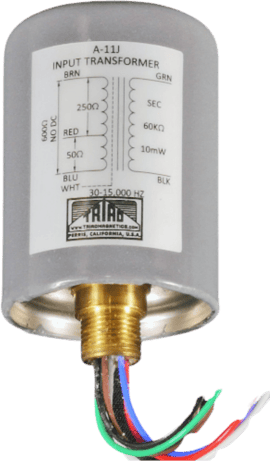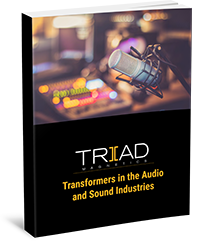At their most basic level, transformers consist of a primary and secondary winding situated around a magnetic core. Audio transformers are used to transmit sound signals from the primary to secondary winding with high accuracy and minimal distortion. Transformers are the most effective solution in many audio applications as they allow for electrical energy to be transferred from one circuit to another without direct connection, during which the energy can adjust from one voltage level to another (impedance matching).
Critical Functions of Audio Transformers
 Audio transformers are used to improve overall sound quality by facilitating smooth and efficient transfer of sound energy from one audio device to another. Matching impedance and voltage helps to ensure that the sound is transferred from the input source to the output device with a high degree of accuracy and minimal distortion.
Audio transformers are used to improve overall sound quality by facilitating smooth and efficient transfer of sound energy from one audio device to another. Matching impedance and voltage helps to ensure that the sound is transferred from the input source to the output device with a high degree of accuracy and minimal distortion.
Impedance Matching
Impedance is the measurement of resistance and reactance to the current flow in an alternating circuit. Impedance levels often vary between input and output circuits, which can result in reduced power transfer and sound distortion. In order to ensure optimal power transfer, audio transformers adjust the impedance as the current flows from one component within the system to the next by adjusting the rotations of its primary and secondary windings.
DC Blocking
Audio transformers also play an important role in eliminating DC current in order to match the voltage levels necessary for optimal transfer of audio energy. Since most audio amplifiers operate on low AC signals, it is necessary to modify naturally occurring DC waves when transferring sound from amplifiers to speakers or recording equipment. DC blocking by audio transformers allows for optimal sound throughput by removing the DC signals altogether.
Understanding Audio Transformer Specifications
Audio transformers are designed to modify the signal between various audio components in a sound system to provide the ideal sound balance. Typical audio transformer specifications include:
- Power Levels. Using an audio transformer allows for adjusting power levels between sound system components in order to balance the sound between amplifiers and speakers and avoid distortion.
- Frequency Response. Different equipment produces different ranges of sound frequencies. An audio transformer can help modify input and output in order to ensure transmission of the full range of audio being produced.
- Total Harmonic Distortion (THD). THD is caused by the combination of multiple layers of sound and power flowing through audio systems. Audio transformers help modify the distortion in order to improve sound quality.
- Insulation Resistance. Insulation resistance can cause loss of sound quality by interfering with the flow of sound through insulated wiring and components. Audio transformers can adjust the current flow in order to account for insulation resistance.
- Impedance: Primary and Secondary. Audio transformers tailor current flow to account for impedance by modifying the rotations of the primary and secondary windings in the transformer.
- Rated DC Current. Electrical equipment is rated to withstand certain levels of DC current. Levels that are too high or low can cause damage to equipment and significantly reduce audio quality. Audio transformers help to modify, reduce, or eliminate DC current in order to produce optimal sound.
- Insertion Loss. Insertion loss refers to loss of signal due to friction from power flow through long cables or poor connections. An audio transformer can help to ensure sufficient current flow to account for insertion loss within a given system.
- Bandwidth. An audio transformer helps to maintain optimal bandwidth levels, which are largely affected by the power and frequency of the signal. 3 dB (decibels) is the standard measuring point for sound attenuation, and allows calibration of current flow to produce optimal sound.
- DC Resistance. DC resistance is the measurement of electron resistance in the current flow through a system. It can result in reduced sound quality and increased distortion. Transformers can be adjusted to account for DC resistance to reduce distortion and improve overall sound system performance.
In addition to selecting the right transformer specifications for your particular sound system, it is important to consider the driving source impedance, in addition to the resistance and capacitance of the current load. Each of these qualities significantly affect the operation of your transformer and your system as a whole.
Audio Transformers from Triad Magnetics
 Since 1943, Triad Magnetics has been a leading provider of dependable, high performance custom audio transformers. We are committed to providing the highest quality audio solutions for our customers in a wide range of industries. To learn more about the benefits and uses of audio transformers, download our eBook "Transformers in the Audio and Sound Industries", or contact our experts today.
Since 1943, Triad Magnetics has been a leading provider of dependable, high performance custom audio transformers. We are committed to providing the highest quality audio solutions for our customers in a wide range of industries. To learn more about the benefits and uses of audio transformers, download our eBook "Transformers in the Audio and Sound Industries", or contact our experts today.







